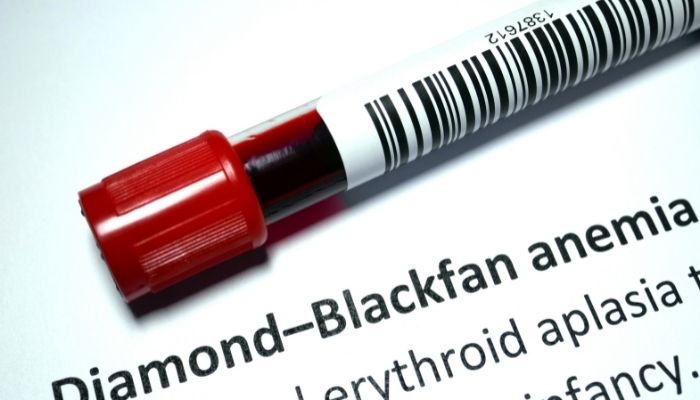Anemia is a health condition where your body can’t produce adequate red blood cells (RBCs). Red blood cells are imperative as they carry oxygen to different parts of your body. Without RBCs, you may feel tired, exhausted, and have shortness of breath. RBCs are made inside the spongy tissue of your bone, known as bone marrow. Diamond-blackfan anemia (DBA) is a type of anemia where your bone marrow can’t produce sufficient RBCs to meet your body’s requirements.
What Causes Blackfan Diamond Anemia?
Diamond-blackfan anemia is also called acquired pure red cell aplasia, commonly diagnosed in children (less than a year old). The primary cause is genetic mutations that are the building blocks of DNA. Sometimes, this mutation is carried forward from a parent to a child. But sometimes the genes change automatically.Moreover, half of DBA cases are genetic, but some don’t have adequate knowledge about the causes of their DBA. Diamond-blackfan anemia affects nearly 5 to 7 per million newborn babies worldwide.
Diamond-Blackfan Anemia Symptoms
People who have DBA experience similar kinds of symptoms like other types of anemia, including fatigue, tiredness, paleness, etc. Newborns may experience some symptoms in their face and body. These symptoms could be,- A small head
- Wide eyes and a flat nose
- Small and low ears
- Short and webbed neck
- Small shoulder blades
- Abnormal thumbs
- Cleft lip
Some other common symptoms of DBA are heart disease, kidney problems, eye problems like cataracts and glaucoma
How Diamond-Blackfan Syndrome Is Diagnosed?
Your doctor will perform several tests to check whether your child has DBA or not before age 1. Children who are suffering from DBA have lower RBCs but normal platelets and WBCs. By analyzing the complete blood count or CBC, your doctor will diagnose DBA in your child. CBC is a blood test that evaluates different parts of blood. This test measures several things, including:- The number of red blood cells, white blood cells, and platelets
- A protein in RBC that carries oxygen, called hemoglobin
- The amount of space the red blood cells takes up in the blood or hematocrit
- Red blood cells’ sizes
1. Reticulocyte Count
This test indicates the number of young red blood cells. With this test, you will know whether your child’s bone marrow is producing adequate red blood cells or not.2. Erythrocyte Adenosine Deaminase (eADA) Levels
More than 80% of people with DBA have high levels of an enzyme called erythrocyte adenosine deaminase. This test indicates the erythrocyte adenosine deaminase levels (eADA) in your little one’s blood.3. Fetal Hemoglobin Levels
This type of hemoglobin is found in babies in the womb. After birth, the levels of this hemoglobin reduce gradually. But children with DBA still have high levels of fetal hemoglobin.4. Bone Marrow Aspiration and Biopsy
For this test, a small portion of cells and fluid are removed from the bone marrow by using a needle. A healthcare expert checks the sample to find out how many red blood cells and other cells are in the marrow, and how wholesome they are. Children who have DBA have only fewer red blood cells in their bone marrow.5. Genetic Tests
These tests are performed to check for DBA genes or genes for other types of anemia that are carried from parents to children.Some Complications of DBA
Children who are suffering from DBA may possess certain diseases and conditions like blood cancer, bone marrow cancer (acute myeloid leukemia), bone cancer (osteosarcoma), and other conditions in which the bone marrow can’t produce healthy blood cells (myelodysplastic syndrome).Treatment of DBA
Children who are suffering from DBA may need longer medical treatment to live their life. And for some, the symptoms disappear after a certain time.Two common treatments are Blood transfusion therapy and corticosteroid medicines. Some people may need a bone marrow transplant, though it is a risky endeavor. Finding a matching donor is an arduous job, so you should discuss all options with your doctor before choosing the best one.
Corticosteroid Drugs
Medications like prednisone (Rayos, Sterapred) may help bone marrow in producing more red blood cells.
Blood Transfusion
If steroid medications are not worthy, then your child’s anemia will become more prominent and a blood transfusion is an option. Whole blood or red blood cells from a healthy donor can replace the blood cells in your child’s body that isn’t functioning. If the patient requires frequent transfusion therapy (usually required every 3-4 weeks), then the patient might also need iron chelation. Iron chelation is imperative in removing excess iron that gets accumulated when a person receives transfusions. If the iron is not extirpated properly, the person may develop iron overload in the heart, liver, and endocrine organs. This may lead to certain diseases, including heart arrhythmias (abnormal heart rhythms), congestive heart failure, liver abnormalities, cirrhosis, diabetes, hypothyroidism, gonadal dysfunction, and other issues.
Bone Marrow/Stem Cell Transplant
This therapy replaces injured bone marrow with healthy stem cells from a donor. This method is the only cure for DBA. This treatment can be performed by using bone marrow from an unaffected sibling or an unrelated donor.



